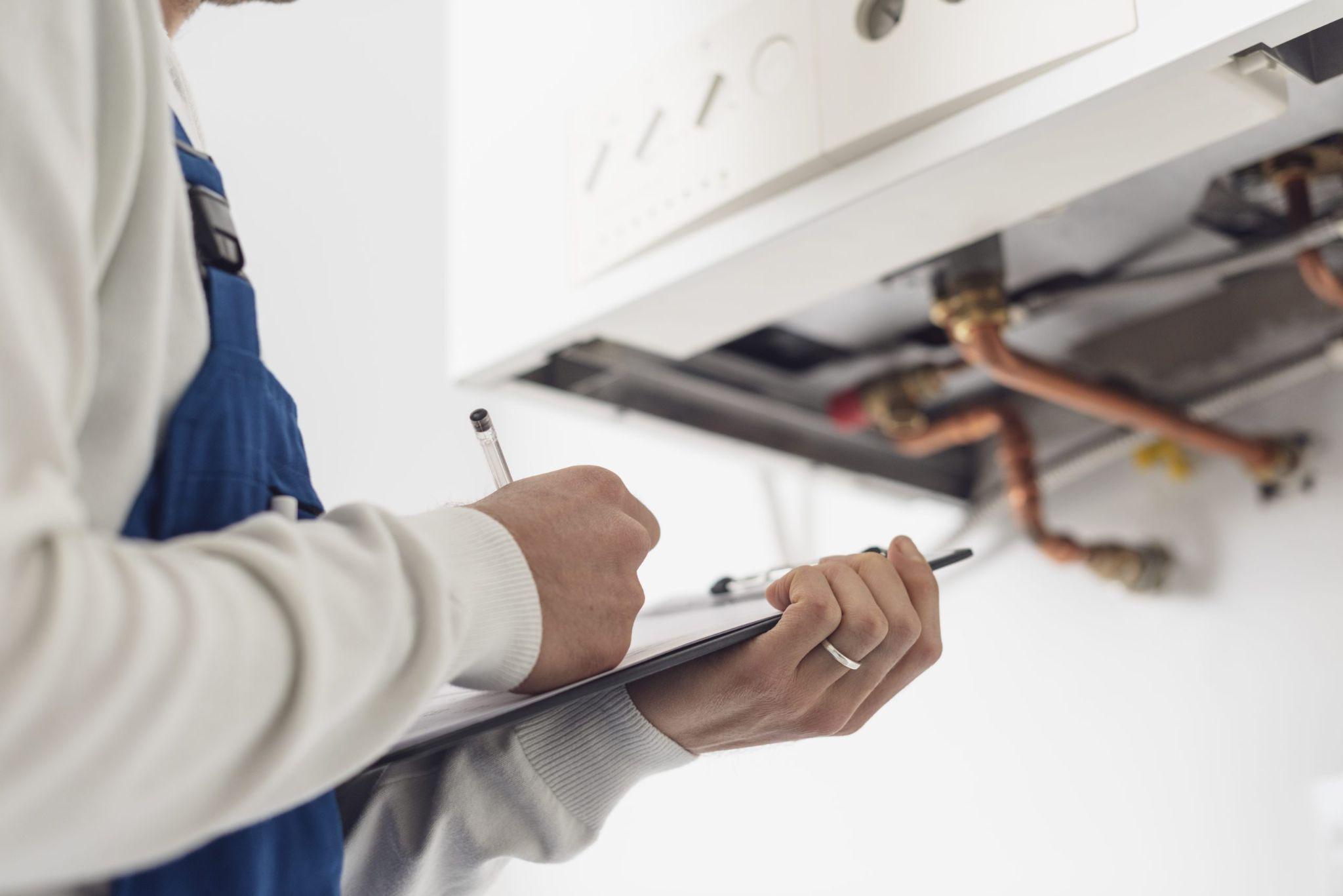Learning
Using Social Media Platforms to Amplify Public Health Messages
Looking for a simple yet powerful way to share important health messages? Ever thought about using social media? Well, using social media marketing can help a lot. Social media is like a super useful tool for groups to talk to lots of people. It helps them share their messages and become better known.
In this blog, we will discuss the importance of using social media in public health domain and how we can utilize these social media platforms to amplify public health messages. So, let’s get started;

The Power of Social Media in Public Health Initiatives
One influential player in this sphere is social media. Not just a playground for the young or a networking tool for businesses, social media is rewriting the rules of public health, reshaping the way we approach, manage, and enhance wellness at a community level.
- Amplifying Awareness: Social media channels Facebook, Twitter, Instagram – they’re not just for selfies and viral challenges. These platforms can educate the public about health issues, with catchy hashtags and compelling infographics making even the most complex information digestible.
- Breaking Down Barriers: Social media allows health messages to bypass traditional gatekeepers. With a click, a post, or a share, anyone can disseminate valuable health information, making healthcare knowledge more democratic.
- Fostering Community Engagement: Through social media, public health initiatives can be more interactive. Q&As, live videos, online forums—this two-way communication fosters a sense of community, making people feel seen, heard, and valued.
- Tracking Trends: Social media can act as a real-time surveillance system for health issues. By monitoring online conversations, we can identify new health trends, understand public sentiment, and respond promptly.
Essentially, social media makes public health initiatives more accessible, more democratic, and more interactive.
How to Use Social Media Platforms to Amplify Public Health Messages
Social media platforms have massive potential to amplify public health messages. Here are some dynamic strategies to utilize these platforms effectively:
Identify target audiences for specific public health messages
Determine who the intended audience is for your health messages. Are they teenagers, parents, seniors, or certain communities? Knowing who you are targeting is essential when creating social media messaging to create a message that resonates with the audience and is effective in communicating the public health message.
Select the most relevant and effective social media platforms
Different social media platforms have different audiences, so it’s important to select the one that best fits the target audience and the public health message you’re trying to communicate.
Create clear and concise messages that resonate with the audience
Keep messages short and to the point in order to maximize impact. Utilizing storytelling techniques, such as personal stories or examples, can make a message more effective in resonating with an audience.
Utilize storytelling to increase impact
Utilize storytelling to increase impact. People often respond more positively when a story is used rather than simple facts and figures.
Collaborate with influencers and experts in the public health field
Influencers on social media can play a significant role in amplifying your health message reach. Partnering with influencers and health professionals ensures your message reaches a larger audience and gains more credibility.
Host live Q&A sessions with public health experts
Live sessions with public health experts allow for real-time interaction with your audience. This proactive approach can address their questions and concerns immediately, increasing trust and engagement.
Research relevant and popular hashtags in the public health domain
Research relevant and popular hashtags in the public health domain. Hashtags are a great way to increase visibility for your posts and messages, so do some research on the most relevant and popular hashtags in the public health domain.
Encourage audience interaction through comments, likes, and shares
People are more likely to engage with posts that encourage interaction. So, interact with your audience by liking, commenting and sharing their post. The more engagement, the wider the reach.
Address misinformation and disinformation related to public health issues
Address misinformation and disinformation related to public health issues. It’s important to be aware of any false information circulating about public health issues and address them as soon as possible.
Respond to crisis situations and health emergencies
Social media can be a valuable tool in crisis situations. It allows for timely updates and direct communication with the public. Quick and accurate information can calm fears and save lives.
Collaborate with Government Agencies and Health Organizations
Collaboration with these entities ensures your messaging is accurate, credible, and in line with public health guidelines.
Encouraging Health Professionals and Community Leaders to Share Messages
Finally, motivate health professionals and community leaders to share your messages. These individuals can not only lend credibility to your messages but also help them reach a wider audience. Their endorsement can significantly enhance your message’s reach and credibility on social media platforms.

FAQ’s
Q: How social media is used in public health?
A:Social media has quickly become a crucial tool in public health. It’s used to disseminate vital health information, promote healthy behaviors, and even track disease outbreaks. Think of it as a digital billboard that shouts out health advisories and wellness tips, but also listens to individuals and their health concerns.
Q: What are the advantages of using social media to promote health?
S: Social media is a very powerful tool to promote timely health updates and advice for patients. There are many benefits of social media in health promotion:
- Firstly, it allows for a broad reach, potentially connecting with millions of users instantly.
- Improved patient engagement and trust in the healthcare system
- Increased access to health information and resources
- Ability to reach a global audience with localized messages
- A direct link to patient resources, support groups, and other organizations
- Cost effective way of sharing health promotion campaigns with target audiences.
Q: How can public health professionals utilize social media?
A: Public health professionals can use social media to:
- Raise awareness about public health topics and issues
- Connect with individuals affected by a particular illness or condition
- Encourage people to participate in preventive health and wellness activities
- Promote healthy lifestyle habits
- Provide support for those suffering from chronic conditions
- Respond to health crises and emergencies
Fianl Words
Social media has become incredibly important for health organizations and governments to share their messages. They use cool influencers, campaigns, and other smart strategies to reach a global audience and promote staying healthy. It’s crucial for public health organizations to utilize these platforms to reach a wide range of people and make a significant impact. By utilizing above outlined effective strategies, health organizations can spread important messages that contribute to everyone’s safety quickly and effectively. So, good luck and thanks for reading!
SEE ALSO: 5 Website Maintenance Hacks To Ensure Uninterrupted Online Success

Learning
First-Time Buyer’s Guide to the UK Property Market

Entering the UK property market as a first-time buyer can feel both exciting and daunting. The process is filled with potential pitfalls and complex decisions, but with the right guidance, it can be navigated smoothly. The estate agents in Yorkshire demystify the journey from the initial decision to buy a home to the moment you step over the threshold of your new property.
Understanding Your Financial Position
The first and perhaps most crucial step in the home-buying process is understanding your financial situation. This includes assessing your savings, income, and current debts. Here’s how you can prepare:
1. Deposit: Generally, you’ll need at least 5% of the property price as a deposit, though aiming for 10% or more can provide better mortgage rates.
2. Income and Expenses: Use a budget planner to assess your monthly income against your expenses. This will help you understand how much you can afford in monthly mortgage repayments.
3. Credit Score: Lenders will evaluate your credit score to determine your mortgage eligibility. So it’s important to have a good credit score, and you should work on it if required.
4. Mortgage Options: Speak to a mortgage advisor to understand different types of mortgages, such as fixed-rate, variable-rate, and help-to-buy schemes.
Getting a Mortgage Agreement in Principle
A Mortgage Agreement in Principle (AIP) is a statement from a lender indicating how much they’ll likely lend you. You will be a more attractive buyer with an AIP as it shows sellers you’re serious and financially prepared.
Deciding What You Want
Before you start viewing properties, it’s essential to know what you’re looking for. Consider the following factors:
1. Location: Proximity to work, schools, public transport, and amenities are key. Research neighbourhoods to find the best fit for your lifestyle.
2. Property Type: Decide whether you want a flat, terraced house, semi-detached, or detached property. Each has its pros and cons.
3. Must-Haves: Make a list of non-negotiables, such as the number of bedrooms, garden size, and parking facilities.
4. Future Proofing: Consider your future needs. Are you planning to start a family? Do you need space for a home office?
Starting the Property Search
With a clear idea of what you’re looking for, you can begin your property search. Here are some tips:
1. Use Online Portals: Websites like Rightmove, Zoopla, and OnTheMarket are excellent starting points. Set up alerts to get notified of new listings that meet your criteria.
2. Visit Estate Agents: Register with local estate agents who can provide insights into the market and inform you of new properties before they’re listed online.
3. Attend Viewings: Don’t rush this part. Visit several properties to get a feel for what’s available in your price range.
Making an Offer
Once you find a property you love, it’s time to make an offer. Here’s how to approach it:
1. Research: Check the selling prices of similar properties in the area to gauge a fair offer.
2. Negotiate: Don’t be afraid to negotiate. The starting point is most usually the asking price.
3. Conditions: You might include conditions in your offer, such as the inclusion of certain fixtures or a specific moving date.
The Legal Process
If your offer is accepted, the legal process begins. You’ll need a solicitor or licensed conveyancer to handle the legalities. Here’s what to expect:
1. Conveyancing: This is the legal transfer of property ownership. Your solicitor will handle this, including conducting searches, dealing with the Land Registry, and transferring the funds.
2. Surveys and Inspections: Arrange for a property survey to check for structural issues. There are different types of surveys, from basic condition reports to full structural surveys.
3. Mortgage Finalisation: Once the survey is complete and satisfactory, your mortgage can be finalised.
4. Exchange of Contracts: This is when the sale becomes legally binding. You’ll pay your deposit at this stage.
5. Completion: On the agreed completion date, the remaining money is transferred, and you receive the keys to your new home.
Moving In
Moving day can be hectic, but planning can ease the stress:
1. Hire a Removal Company: Book a reliable removal company well in advance. Discover the best deals by getting quotes from multiple companies.
2. Pack Strategically: Label your boxes by room and keep essential items accessible.
3. Notify Utilities and Change Address: Inform your utility providers of your move date and update your address with banks, the DVLA, and other important institutions.
Settling In
Get settled. Introduce yourself to the neighbours, familiarise yourself with the local area, and really start to make the place your own.
Here are a few final tips:
1. Safety Checks: Make sure that your smoke alarms and carbon monoxide detectors are working, and make sure that you know where the gas and electricity meters are located.
2. Maintenance Plan: Keep a record of the smooth functioning of your new home with a maintenance schedule, complete with regular checks and seasonal tasks.
3. Personal Touches: Add personal touches to make the space feel like home. This can be from putting up family photos or redoing the decoration in your rooms.
Conclusion
Buying your very first home in the UK is most definitely a milestone, difficult and full of challenges but rewarding in the end. Such a philosophy guides you in understanding finances and knowing what you want to achieve from detailed research, and seeking professional advice that confidently helps you navigate the property market. Yes, the journey may have its hurdles, but in the end—owning your own home—the reward will be worth the effort. Welcome to your new chapter!
SEE ALSO: Conquer the Chaos: Hacks to Clean Your Home in Half the Time
Learning
5 Health Benefits of Regular Pedicures

There’s nothing quite like a pedicure to keep your feet looking and feeling their best, but did you know that pedicures do more than simply enhance the appearance of your feet? Many people don’t realize that regular pedicures can come with a wide range of health benefits that can promote the well-being of your feet, so here are some ways that your routine pedicure keeps both your toenails and feet in the best condition possible!
Smoother Skin
One of the biggest misconceptions about pedicures is that they only cater to and look after your toenails. While you’ll definitely be leaving each session with a fresh coat of nail polish, your pedicure can also do wonders for the health of your skin. Aside from trimming and shaping your nails and cuticles, you’ll notice that your nail technician also dedicates a few steps to the skin of your feet.
After inspecting your feet and looking for any issues or imperfections that may need to be addressed, your technician will work on an exfoliating scrub to remove any dead skin cells. This step may also be aided by a foot file, which can be used to buff away any calluses and other problem areas manually.
Softer Skin
After your nail technician addresses all the problem areas of your feet and removes any unwanted dead skin cells, he or she will often massage in a moisturizing product, such as lotion, cream, or butter, to ensure that your skin is properly moisturized. These products contain skin-loving ingredients that will ensure that your feet have everything they need to look and feel their best so that you can walk out of your pedicure with a renewed sense of confidence.
Healthier Nails
After your pedicure session, your nails will not only look better due to the fresh coat of nail polish, but they’ll also be healthier and stronger. This is because your nail technician takes their time to ensure that your nails are properly looked after through steps that include deep cleaning, nail trimming, nail filing, and cuticle care. All of these things work together to prevent issues like ingrown nails from occurring, all the while improving the appearance of your nails.
Increased Blood Circulation
While the specific steps included in your pedicure will depend on the beauty salon, most pedicures will have a massage step somewhere in the mix. One of the often overlooked benefits of these massages is the increased blood circulation, which can deliver more nutrients and oxygen to your feet and nails, promoting their health and appearance. Aside from that, better blood flow means reduced tension and soreness, as well as better distributed heat throughout your body.
Reduced Infections
A significant amount of dirt and bacteria can build up on your feet without you even realizing it, but pedicures can be a great way to prevent these from happening in the first place. The exfoliation step of a pedicure removes dead skin cells as well as all the debris that may have accumulated underneath, and the deep cleaning of your toenails and cuticles also gets rid of any impurities that may have slipped beneath them, which can stop infections from happening.
These are some of the many health benefits that you can look forward to at your next pedicure appointment. However, it’s worth noting that you need to book regular sessions to truly reap all the rewards. This can be difficult, especially when you don’t feel like driving to your nearest nail salon after a long day, but the good news is that you can enjoy the salon experience in the comfort of your own home with a home pedicure service.
Learning
Commercial Boiler Installation Services London

For businesses in the bustling city of London, having a reliable heating system is crucial. Whether you’re opening a new office, expanding your current premises, or simply upgrading an outdated system, commercial boiler installation services for businesses in London are essential to ensure your operations run smoothly and efficiently. Proper installation and maintenance of commercial boilers can make a significant difference in energy efficiency, cost savings, and the overall comfort of your workspace.
The Importance of Professional Installation
When it comes to installing a commercial boiler, professional expertise is paramount. Here’s why:
- Efficiency and Performance: Professional installation ensures that your boiler operates at peak efficiency, reducing energy consumption and lowering utility bills. A well-installed boiler can effectively meet the heating demands of your business without unnecessary energy waste.
- Safety: Commercial boilers are complex systems that require precise installation to operate safely. Professional installers adhere to stringent safety standards and regulations, minimizing the risk of accidents and ensuring the safety of your employees and premises.
- Compliance with Regulations: Commercial properties are subject to various building codes and regulations. Professional installers are well-versed in these requirements and ensure that your boiler system complies with all local laws and standards.
- Longevity and Reliability: Proper installation is critical to the longevity and reliability of your boiler. A professional installation can prevent common issues such as leaks, pressure problems, and system failures, ensuring that your boiler runs smoothly for years to come.
Key Considerations for Commercial Boiler Installation
When planning for a commercial boiler installation, several factors need to be considered:
- Type of Boiler: The type of boiler you choose will depend on your business’s specific needs. Options include gas boilers, oil boilers, and electric boilers, each with its own set of advantages. Consulting with a professional can help you determine the best choice for your business.
- Sizing and Capacity: The boiler’s size and capacity must match the heating demands of your commercial space. An undersized boiler will struggle to meet your needs, while an oversized one will lead to inefficiencies and higher costs.
- Location: The placement of your boiler affects its efficiency and accessibility for maintenance. Professional installers can help you choose the optimal location for your boiler.
- Integration with Existing Systems: If you’re upgrading or replacing an existing boiler, it’s essential to ensure compatibility with your current heating system. Professional installers can seamlessly integrate the new boiler with your existing setup.
Choosing the Right Installation Service

Selecting the right installation service provider is crucial to the success of your boiler installation project. Consider the following when making your choice:
- Experience and Expertise: Look for a provider with a proven track record in commercial boiler installations. Experienced installers can handle the complexities of commercial systems and provide high-quality workmanship.
- Reputation: Check reviews and testimonials from previous clients to gauge the provider’s reliability and customer satisfaction.
- Comprehensive Services: Choose a provider that offers a full range of services, including installation, maintenance, and repair. This ensures that all your boiler needs are met by a single, trusted source.
In London, ROWLEN is a reputable name known for delivering top-notch commercial boiler installation services. Their team of experts is dedicated to providing efficient, safe, and compliant installations tailored to the unique needs of businesses.
Conclusion
Investing in professional commercial boiler installation services for businesses in London is essential for ensuring efficiency, safety, and long-term reliability. By choosing an experienced and reputable service provider like ROWLEN, you can rest assured that your heating system will be installed correctly and maintained to the highest standards. Proper installation not only enhances the performance of your boiler but also contributes to the overall comfort and productivity of your business environment.
SEE ALSO:
-

 News4 years ago
News4 years agoLet’s Know About Ultra High Net Worth Individual
-
Entertainment2 years ago
Mabelle Prior: The Voice of Hope, Resilience, and Diversity Inspiring Generations
-
News11 years ago
Enviromental Groups Tell Mekong Leaders Lao Dam Evaluation Process Flawed
-

 Health4 years ago
Health4 years agoHow Much Ivermectin Should You Take?
-

 Tech3 years ago
Tech3 years agoTop Forex Brokers of 2023: Reviews and Analysis for Successful Trading
-

 Lifestyles3 years ago
Lifestyles3 years agoAries Soulmate Signs
-

 Entertainment3 years ago
Entertainment3 years agoWhat Should I Do If Disney Plus Keeps Logging Me Out of TV?
-

 Health3 years ago
Health3 years agoCan I Buy Ivermectin Without A Prescription in the USA?